What Gensler’s Education Engagement Index Reveals About the Future of Hybrid Learning
May 02, 2024 | By Erin Cubbison, Kristen Tobing Stromsvold, Allison Bonser
Editor’s note: This is the second blog in this series. To learn more about the 2023 Education Engagement Index survey, please see the first blog. Learn more about our survey method.
As the pandemic begins to fade into recent memory, the desire for hybrid learning, teaching, and working remains. After surveying nearly 3,000 students, educators, and staff members at U.S.-based colleges and universities, Gensler’s 2023 Education Engagement Index survey reaffirms that while there is a clear desire for hybrid and virtual learning, improvements need to be made to make this learning experience more effective.
Here are a few key findings we’ve gleaned in three years studying student and educator preferences related to hybrid and virtual learning in higher education:
Hybrid learning remains a force on campus.
Compared to last year, students, educators, and staff all show an increased preference to be on campus, with students reporting the largest increase. While 45% of students prefer a fully on-campus learning experience, the majority of students, educators, and staff respondents want a hybrid or virtual modality.
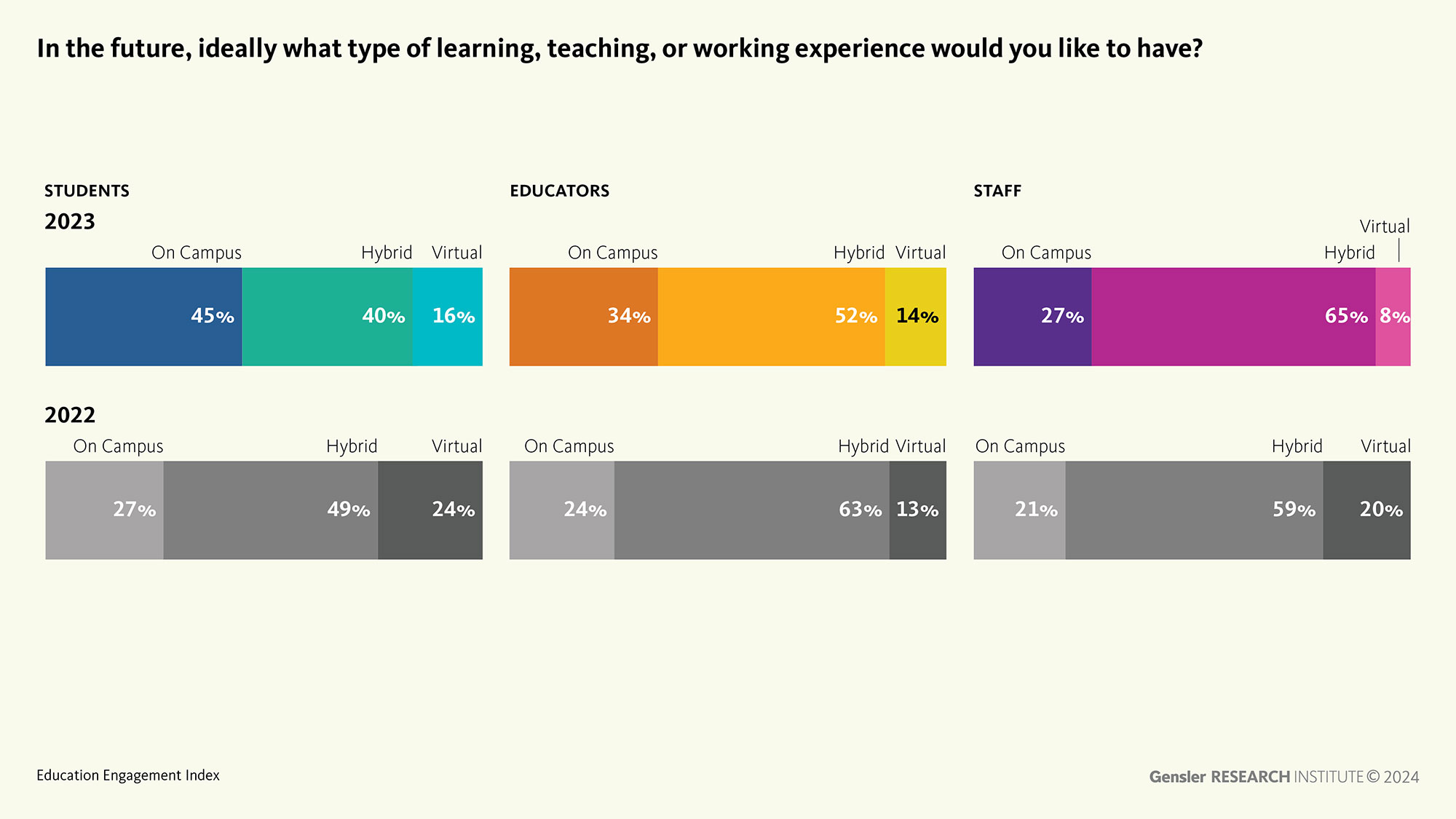
As one might expect, preference for on-campus, hybrid, and virtual learning varies based on students’ areas of study. Students in the sciences, health professions, and the arts have greater preference to be on campus, where they have access to labs and studios. Students in computer sciences, public health, and business disciplines, which have fewer specialty spaces on campus, prefer a hybrid experience.
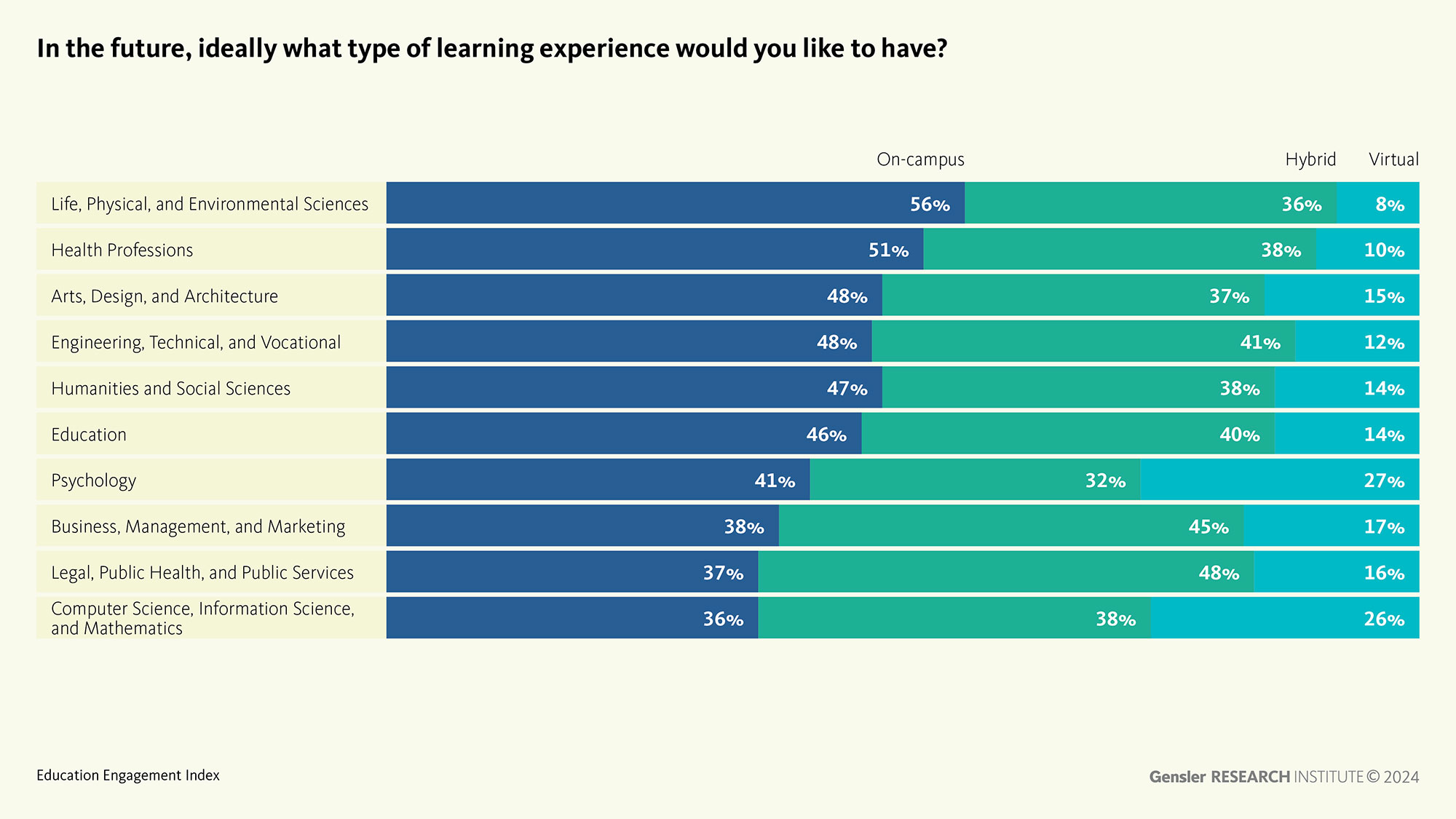
When it comes to hybrid learning, students and educators have similar preferences.
Among those who prefer a hybrid schedule, student and educator preferences are aligned on the ideal proportion of class types. On average, they prefer that almost half of their classes are on campus, about one-quarter of their classes are virtual, and about one-third of their classes are hybrid classes.
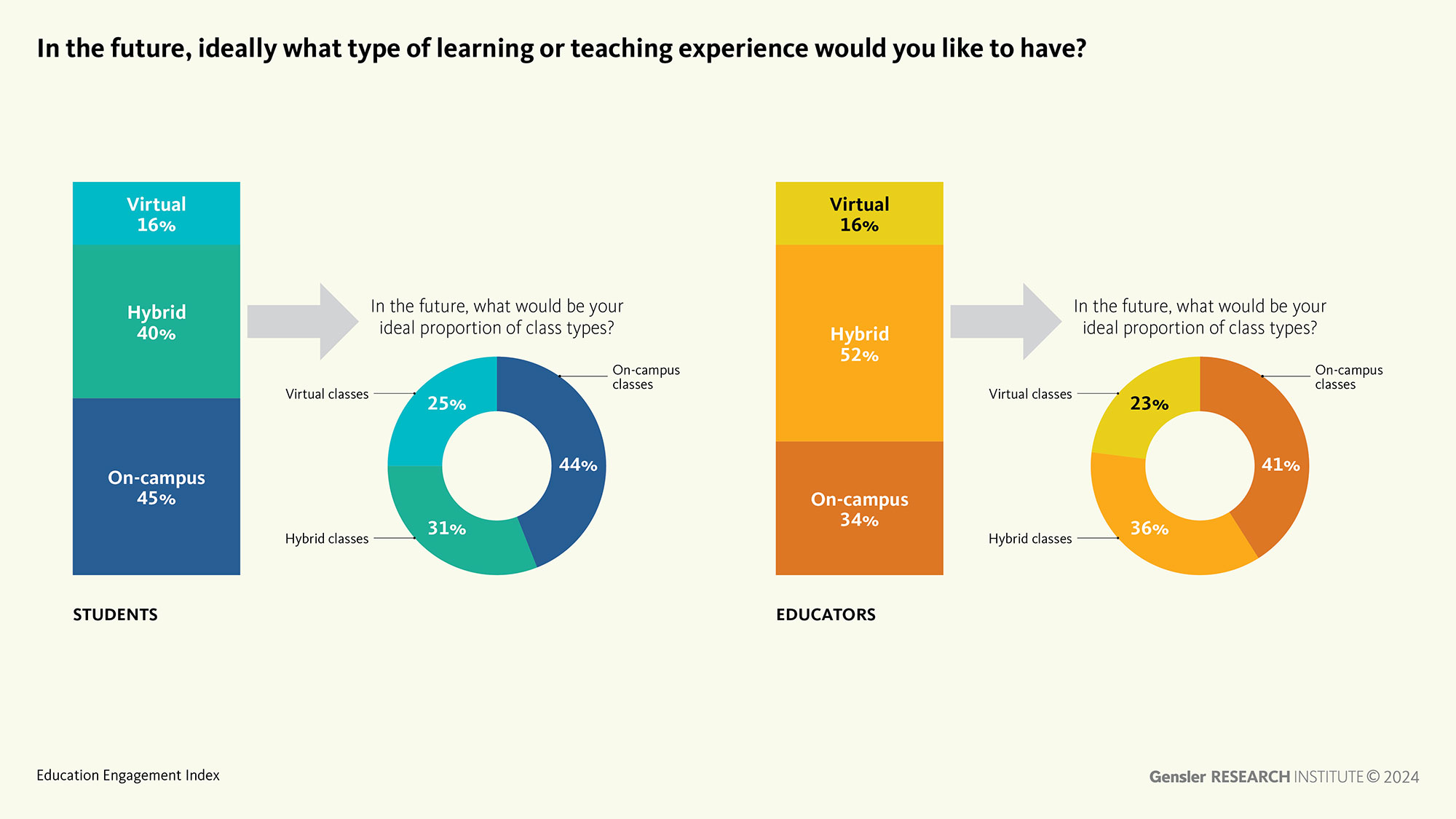
The term “hybrid class” can be interpreted in different ways, each with different instructional, schedule, technological, and spatial implications. In this research, we consider three types of hybrid classes:
- HyFlex – Classes offer a virtual or in-person participation option for all activities.
- Activity-based Hybrid – Classes have certain activities in person and other activities are virtual.
- Schedule-based Hybrid – Classes meet in-person or virtually based on the day of the week or portion of the semester.
Both students and educators report the strongest preference for activity-based hybrid, where class activities are in-person or virtual, to best engage students and enhance the learning experience.
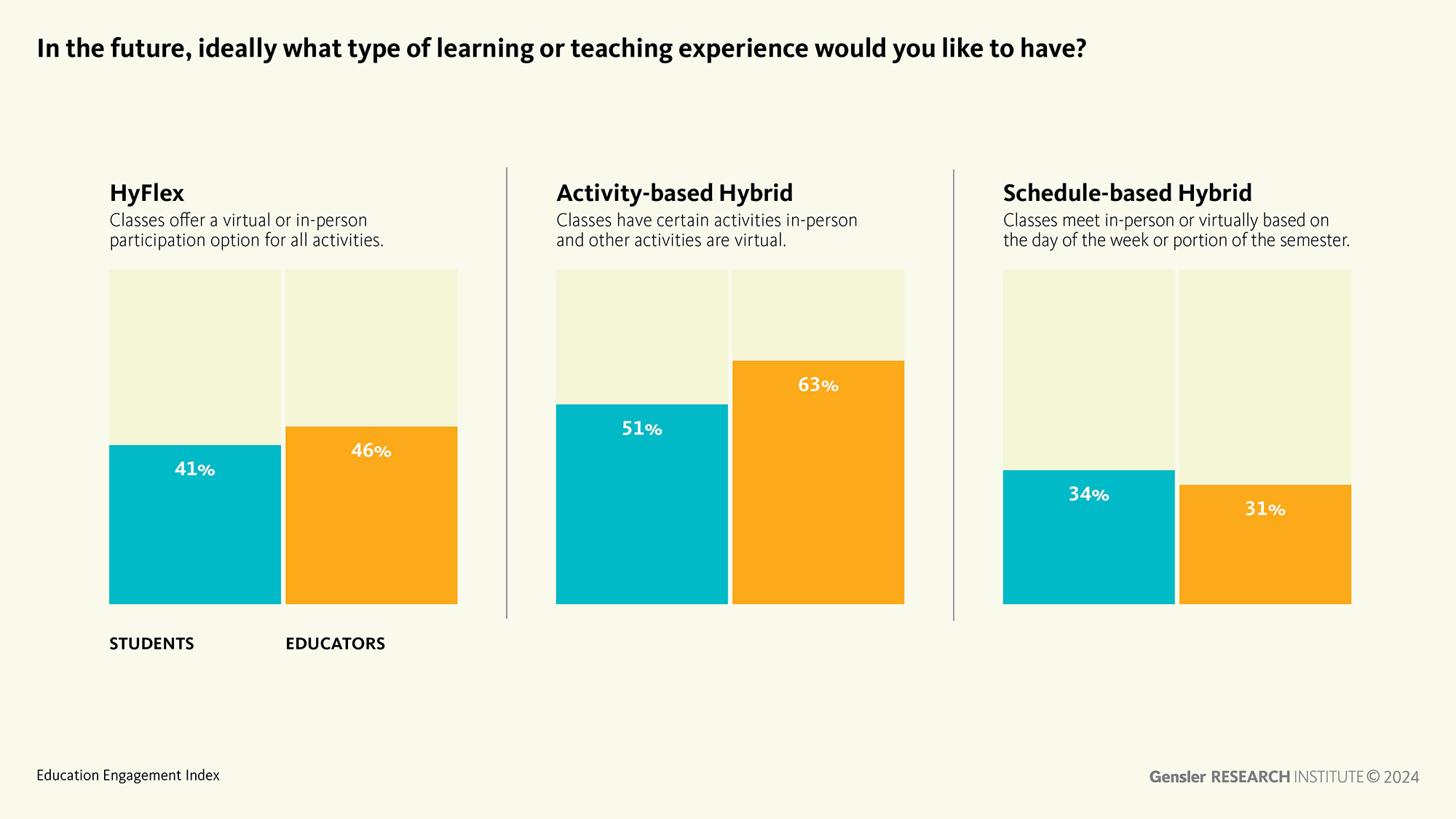
When looking at different types of learning interactions, students would prefer to participate in-person when learning in small class sessions and when working with other students. Across nearly all types of learning interactions, about half of educators prefer to participate in person.
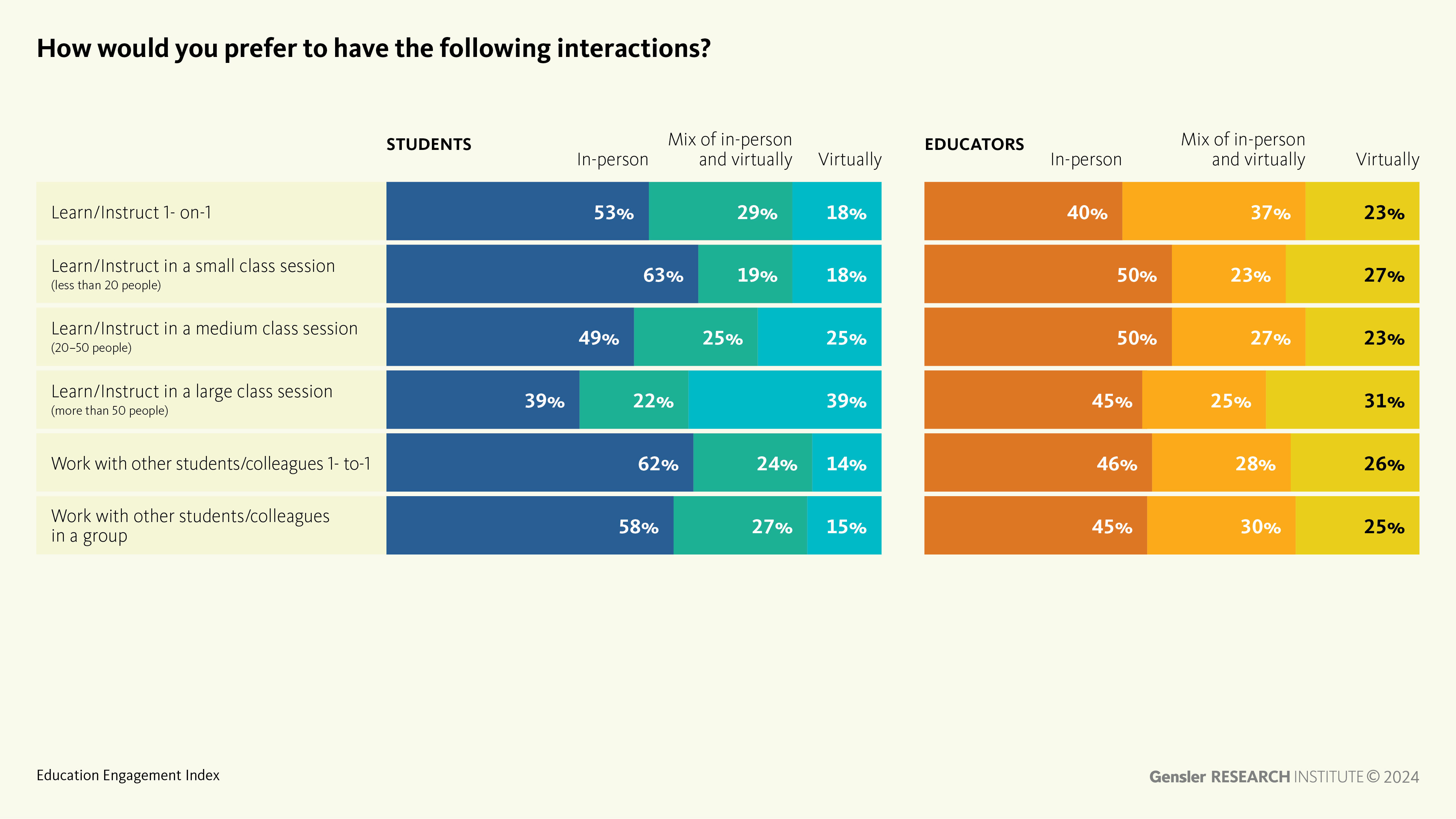
Virtual doesn’t mean off-campus.
In addition to their home or residence hall, students are interested in participating virtually from a variety of other locations — both on and off-campus. Included in these space types are study spaces within the residence hall or library, as well as campus student centers and cafes. This data indicates that students desire the flexibility to learn from anywhere. Campuses may benefit from accommodating virtual learning in spaces that are traditionally intended for quiet study and social activities alike.
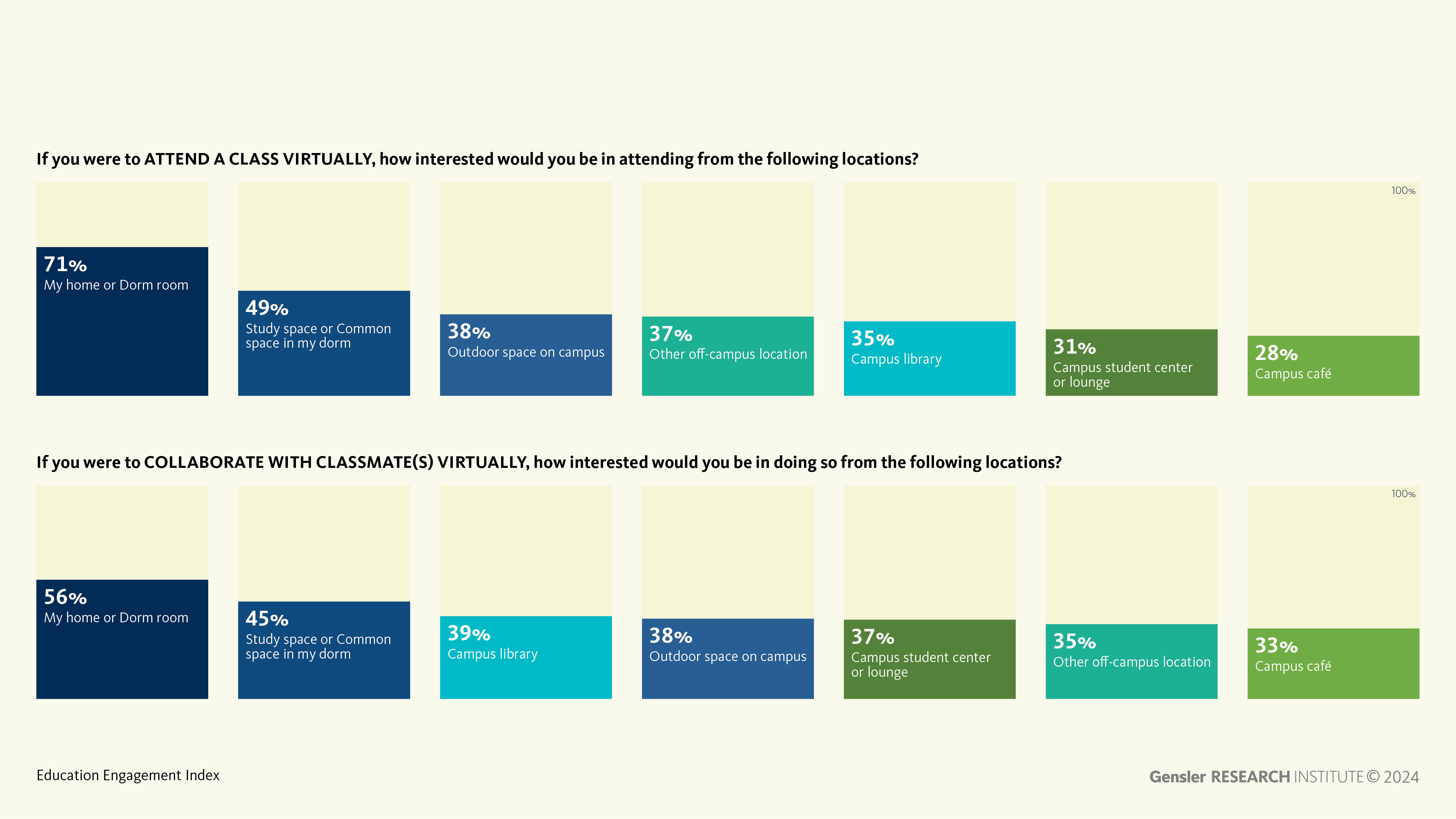
Remedying the challenges related to tools, software, and internet access could greatly improve hybrid learning effectiveness and improve engagement. A better alignment of course content and instruction modality could also improve learning effectiveness.
Virtual classes can be ineffective for a variety of reasons.
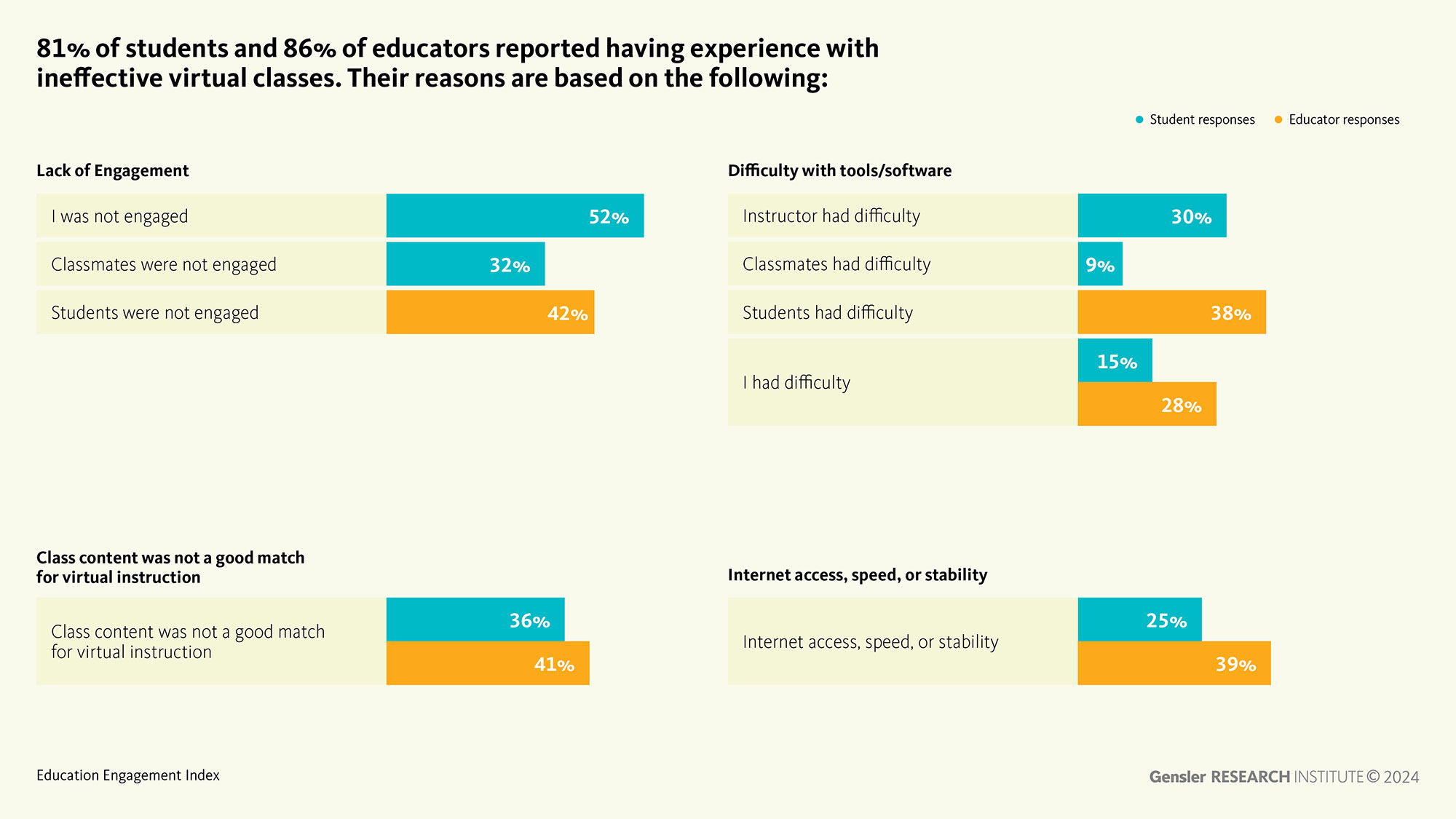
Hybrid classes can also be ineffective for similar reasons.
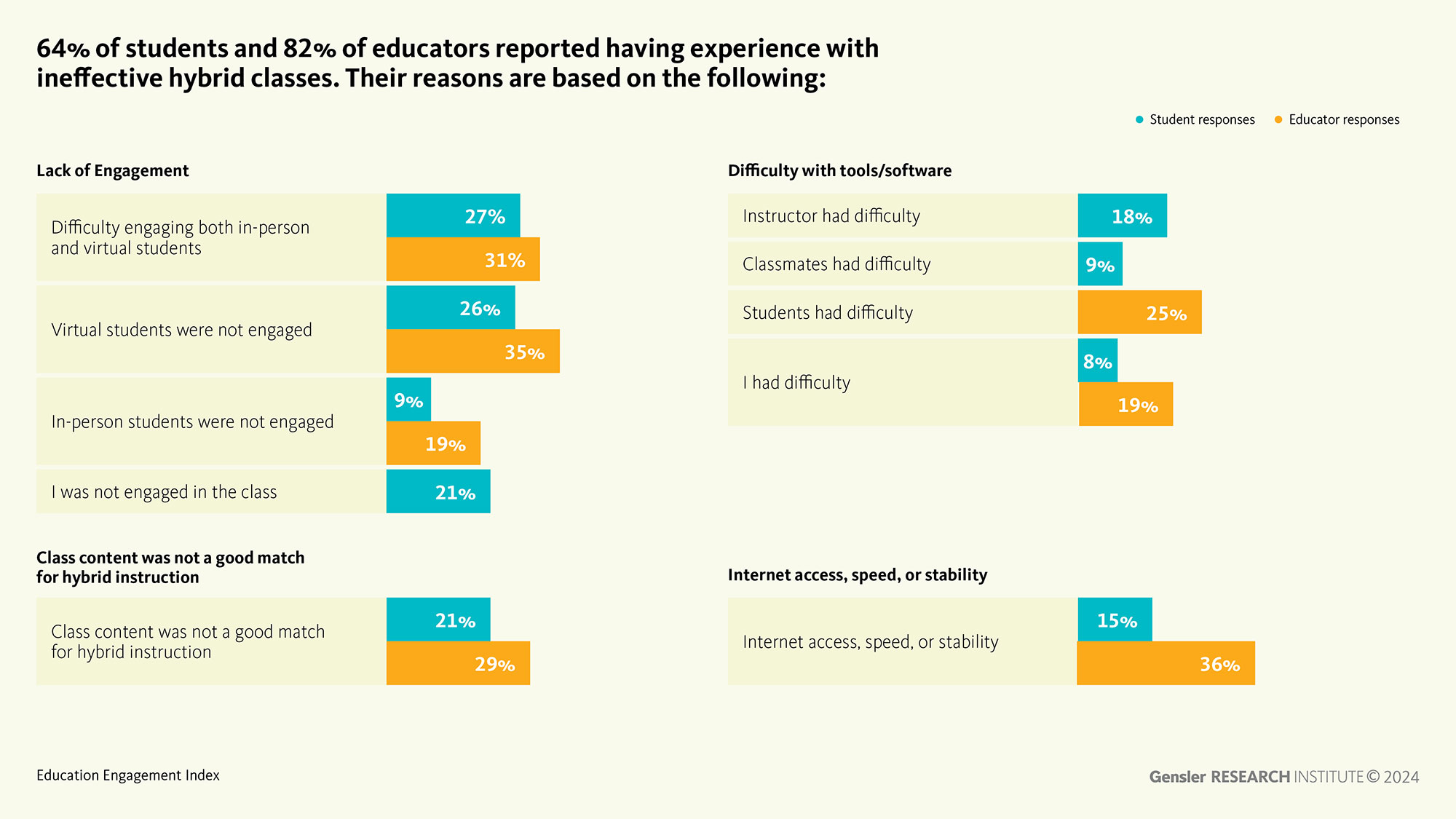
Seize the opportunity for multimodal approach.
The benefits of embracing hybrid and virtual as part of a multimodal approach are multifold: These learning methods can be more inclusive for students with different abilities, language needs, and communication styles. They provide flexibility for those with constrained schedules. They offer the opportunity to expand the geographic boundary of an institution’s location. And they can relieve demand on instructional space, office space, and support spaces to help achieve the highest and best use of precious campus real estate.
The return to in-person interaction for many students, faculty, and staff has been meaningful, but it does not suggest a one-size-fits-all approach. The challenges above must be addressed in order for hybrid and virtual modalities to remain viable. In-person, hybrid, and virtual approaches can all be part of an ecosystem of learning modalities to support multiple benefits for all campus stakeholders.
Education Engagement Index 2023 Methodology
We deployed an online survey to an anonymous panel of 2,479 students, educators, and staff members at U.S.-based colleges and universities. Responses were collected from May 1 to June 7, 2023. This study was conducted through the Gensler Research Institute — a network of researchers and thought leaders who create insights that our education designers and strategists can use to tackle campuses’ toughest challenges, such as the student, faculty, and staff experience.
To learn more about the 2023 Education Engagement Index and how the findings relate to your Institution, please contact .
For media inquiries, email .



